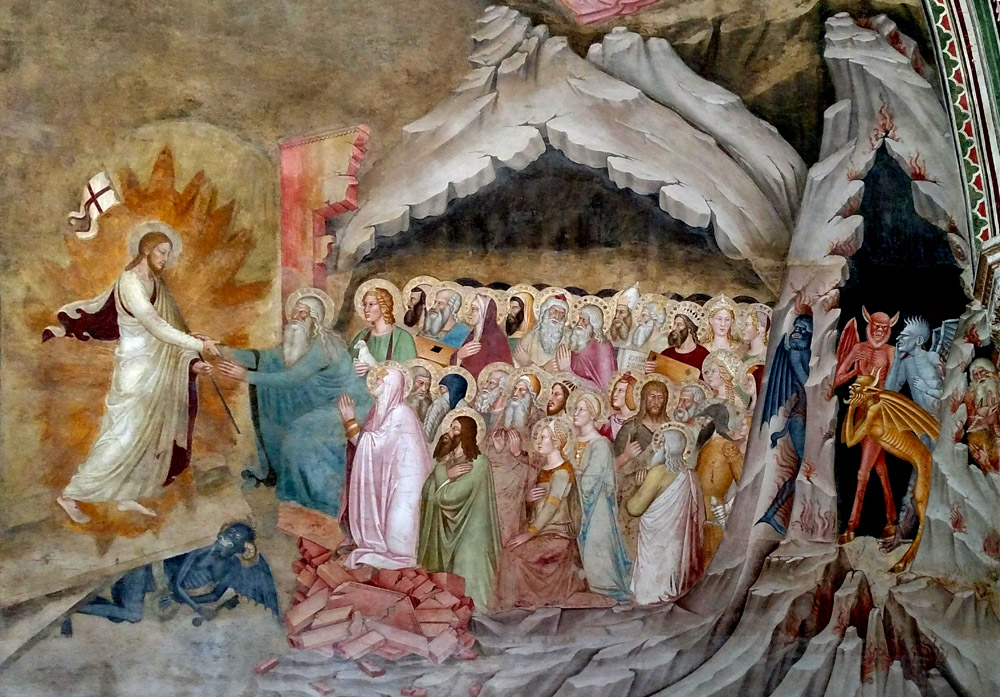Andrea di Bonaiuto, The Anastasis

1365-67
Fresco
Spanish Chapel, Santa Maria Novella, Florence
This detail from Bonaiuto's Passion and Resurrection of Christ is an Italian take on the Orthodox iconographic type in which Christ breaks down the doors of Hades, defeats Satan (the blue demon crushed beneath the door), and rescues his faithful. In the East, this kind of image represents the Resurrection, which is the meaning of the word anastasis. In the present work, it is a subordinate part of a grand design whose summit is a western-style Resurrection.
Despite the basic iconography, the work is easily recognized as western. The figures are more naturalistic than in Orthodox images, and Christ holds a banner like the one in western Resurrections rather than the long cross typical of eastern ones.
The first of the faithful is Adam, here pictured as an old man in reference to St. Paul's statement, "our old man is crucified with him, that the body of sin may be destroyed" (Romans 6:6). Eve stands beside him, and St. John the Baptist stands behind him, identified by the lamb in his arms. In the Gospel of Nicodemus it is he who has announced the tells the others that Christ is about to arrive. Perhaps the man behind John holding the wooden box (arca in Latin) could be Noah. On the far right, demons watch and an old man who was apparently not faithful remains in a cave.
View this image in full resolution.
Read more about Harrowing of Hell images.
Photographed at the chapel by Richard Stracke, shared under Attribution-NonCommercial-ShareAlike license.